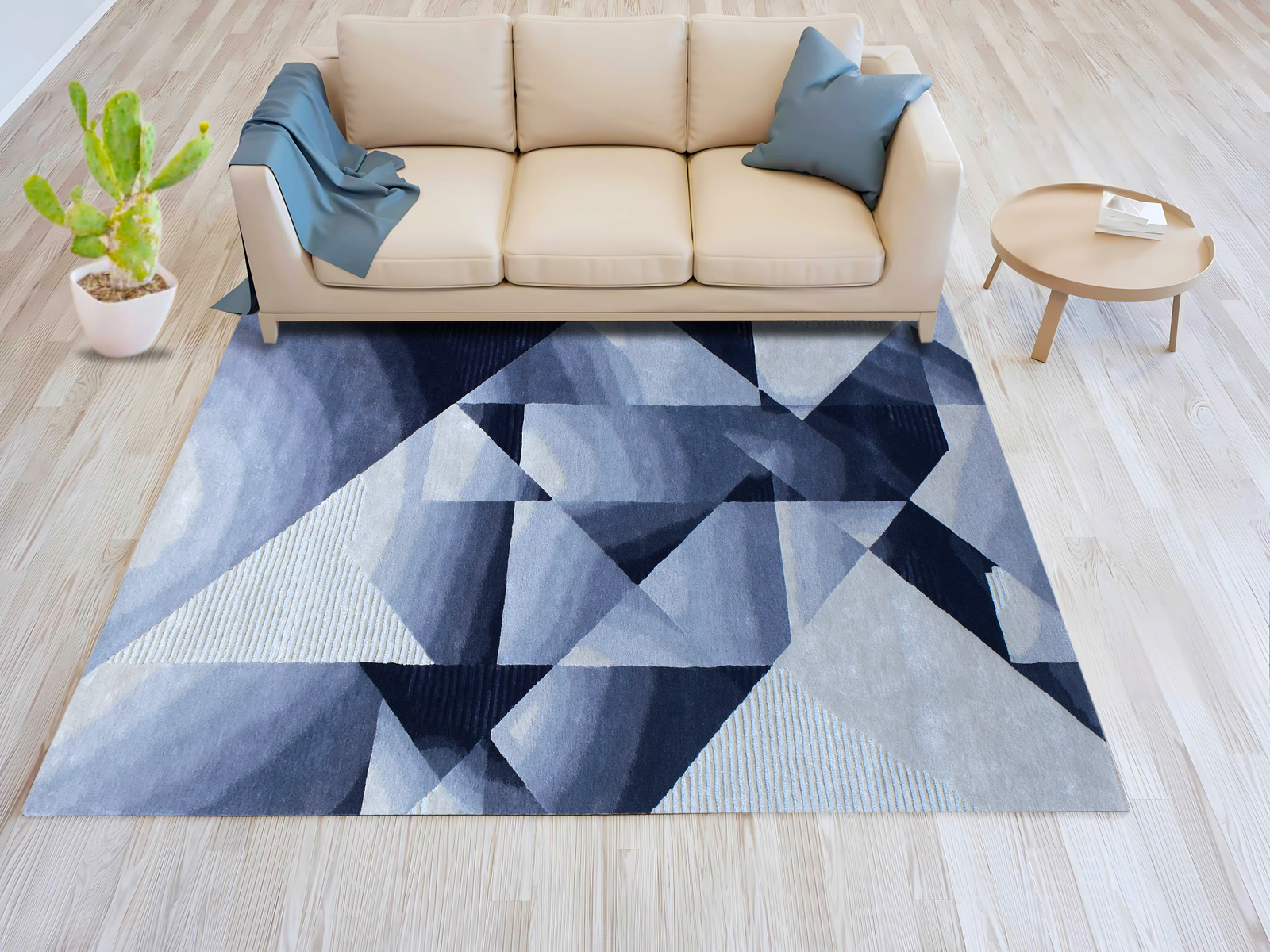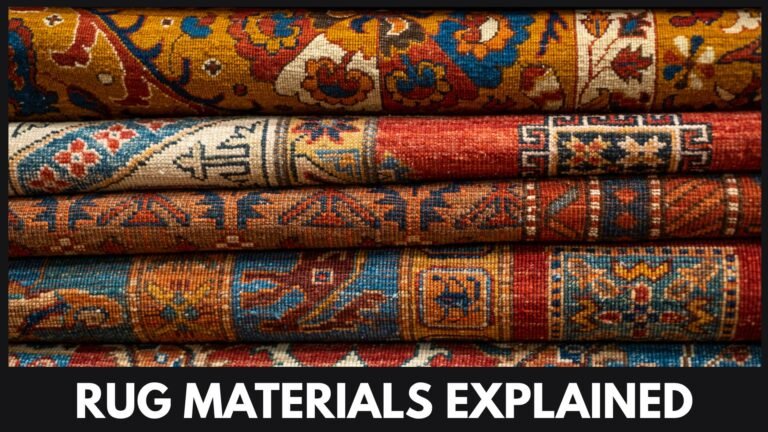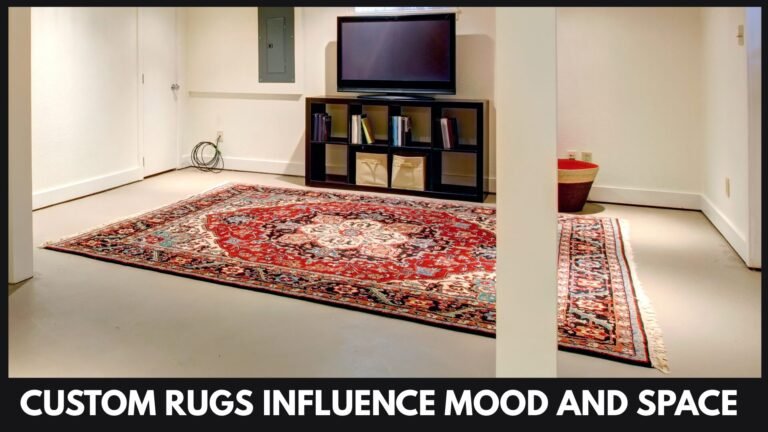
Classification of Rugs Based on Material
Rugs Based on Material: Rugs have become a popular choice for modern homes. They not only add warmth and comfort but also enhance the overall beauty of any space. There are different types of rugs available in the market, and each one has unique features. The variety of rugs comes from the fact that they are made from different materials. From natural to synthetic, several materials are used to create rugs. In this blog, we will explore the most popular materials used to make rugs. These materials are widely available and preferred by rug manufacturers. However, it is important to do some research before making a purchase. You can look online using terms like “stair rug manufacturers” or “non-woven rug manufacturers” to find the right products.
Table of Contents
Wool Rugs
Wool is one of the most commonly used natural fibers for making rugs. It is known for its high durability, softness, and strength. These qualities make wool an excellent choice for rug manufacturing. Additionally, wool is a natural fiber that does not involve chemicals during its processing, making it a safe option for people with allergies. One standout feature of wool rugs is their resistance to fire, which adds an extra layer of safety to homes.
Advantages of Wool Rugs:
- Durability: Wool rugs can withstand heavy foot traffic without showing wear and tear.
- Allergy-Friendly: Free from chemicals, they are suitable for people sensitive to allergens.
- Fire Resistance: Wool has natural flame-retardant properties.
- Insulation: Wool provides both sound and heat insulation, making it ideal for colder climates.
Disadvantages of Wool Rugs:
- Prone to Mould: Wool absorbs moisture, which can lead to mold growth if not properly maintained.
- High Maintenance: Regular cleaning is needed to keep wool rugs in good condition.
- Cost: Wool is more expensive compared to synthetic materials.
Despite these drawbacks, wool remains a top choice for rug enthusiasts due to its luxurious feel and insulating properties.
Cotton Rugs
While wool is perfect for colder climates, cotton is an excellent choice for summer. Cotton is a natural fiber known for its ability to resist heat and keep spaces cool. These rugs are lightweight, easy to clean, and come in a variety of colors and patterns, making them highly versatile.
Advantages of Cotton Rugs:
- Affordable: Cotton rugs are cost-effective compared to wool.
- Easy to Clean: The quick-drying nature of cotton makes cleaning hassle-free.
- Durable: Cotton rugs can withstand moderate use without wearing out quickly.
- Variety: Available in many designs and colors to suit different preferences.
Disadvantages of Cotton Rugs:
- Fire Susceptibility: Cotton is not fire-resistant, posing a safety risk in some situations.
- Aging Effect: Over time, cotton undergoes cellulosic degradation, leading to a browning effect.
Despite these limitations, cotton rugs are ideal for warm climates and are an economical option for decorating homes.
Coarse Plant-Based Fiber Rugs
Apart from wool and cotton, other natural plant-based fibers are also used to make rugs. These include jute, sisal, coir, and seagrass. These materials are eco-friendly and have gained popularity in recent years due to their rustic and natural appeal.
Types of Coarse Plant-Based Fiber Rugs:
- Jute Rugs: Known for their softness, jute rugs are perfect for low-traffic areas.
- Sisal Rugs: These are strong and durable, making them suitable for high-traffic spaces.
- Coir Rugs: Made from coconut husk, coir rugs are sturdy and water-resistant.
- Seagrass Rugs: With a smooth texture, seagrass rugs are naturally stain-resistant.
Advantages:
- Sustainability: Plant-based fibers are renewable and eco-friendly.
- Aesthetic Appeal: They bring a natural and earthy look to interiors.
- Durability: Some plant-based fibers like sisal are very strong and long-lasting.
Disadvantages:
- Moisture Sensitivity: These fibers are prone to damage when exposed to excessive moisture.
- Rough Texture: Some materials like sisal may feel coarse underfoot.
Synthetic Rugs
Synthetic fibers are man-made materials that are widely used to make rugs. They offer affordable options with a wide range of features. Let’s explore some popular synthetic rug materials:
Polyester Rugs
Polyester is a common synthetic fiber used in the rug industry. It is soft, affordable, and resistant to stains, making it a practical choice for budget-conscious buyers.
Advantages of Polyester Rugs:
- Cost-Effective: Polyester rugs are inexpensive.
- Liquid Repellent: They are resistant to liquid spills, making them easy to maintain.
- Soft Texture: Polyester rugs provide a luxurious feel at an affordable price.
Disadvantages:
- Flattening: Heavy furniture can leave marks on polyester rugs, flattening their texture.
- Color Fading: The colors of polyester rugs may fade over time.
Nylon Rugs
Nylon is another popular synthetic fiber known for its strength and resilience. Rugs made of nylon are a great choice for areas with high foot traffic.
Advantages of Nylon Rugs:
- Durability: Nylon rugs can withstand wear and tear.
- Fade Resistance: The fiber holds dye well, preventing color fading.
- Affordability: Nylon rugs are reasonably priced compared to wool.
Disadvantages:
- Static Build-Up: Nylon can generate static electricity.
- Moisture Issues: Although nylon is strong, prolonged exposure to moisture can weaken it.
Why Choose Rugs from Carpets and Rug?
At Carpets and Rug, we offer a wide range of rugs made from both natural and synthetic fibers. Whether you need a cozy wool rug for your living room or a durable nylon rug for high-traffic areas, we have options to suit every preference. Our products are carefully crafted to provide style, comfort, and durability.
Conclusion
This blog has provided an in-depth look at the different types of rugs based on the materials used to make them. From natural fibers like wool and cotton to synthetic options like polyester and nylon, each material has its unique benefits and limitations. Choosing the right rug depends on your specific needs, budget, and the area where it will be used. Remember, not all rug manufacturers produce every type of rug, so it’s essential to search specifically for the type you want. For quality and variety, consider exploring the collections at Carpets and Rug, where you’ll find the perfect rug for your home.
FAQs
- What is the most durable rug material? Nylon and wool are considered highly durable materials for rugs.
- Are wool rugs suitable for allergy sufferers? Yes, wool rugs are free from chemicals and are suitable for people with allergies.
- Which rug material is best for summer? Cotton is ideal for summer due to its heat-resisting properties.
- Are plant-based fiber rugs eco-friendly? Yes, materials like jute, sisal, and seagrass are sustainable and eco-friendly.
- Do synthetic rugs fade over time? Polyester rugs are prone to fading, while nylon rugs resist color fading.
- How do I maintain wool rugs? Regular vacuuming and keeping them dry can help maintain wool rugs.
- Are cotton rugs fire-resistant? No, cotton rugs are not fire-resistant.
- What is the main drawback of polyester rugs? Polyester rugs tend to flatten under heavy furniture.
- Which rug material is best for high-traffic areas? Nylon and sisal are excellent choices for high-traffic spaces.
- Where can I find a variety of rugs? Visit Carpets and Rug to explore a diverse collection of rugs made from different materials.



